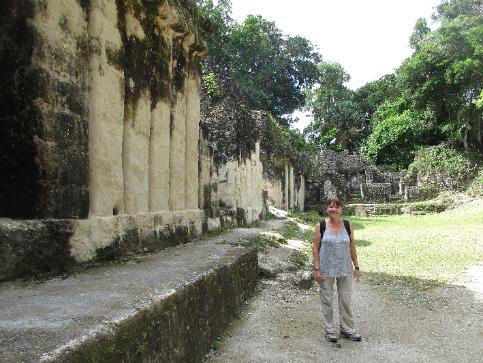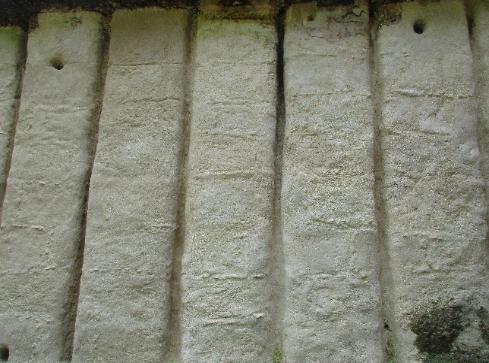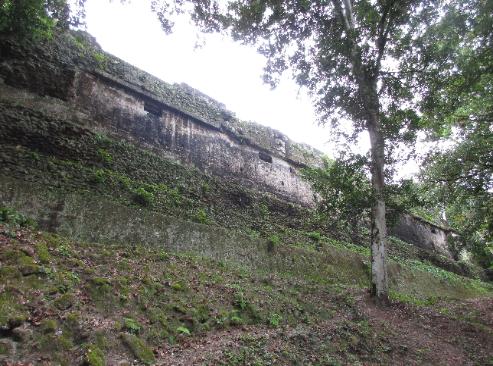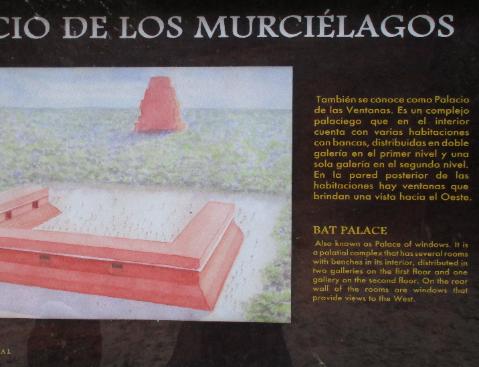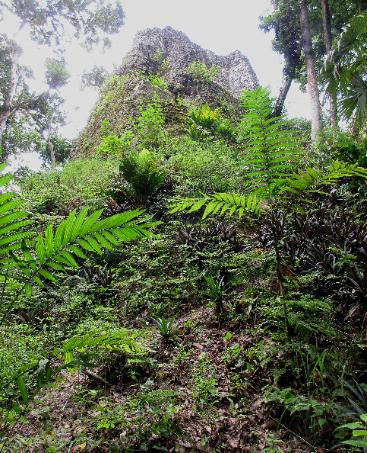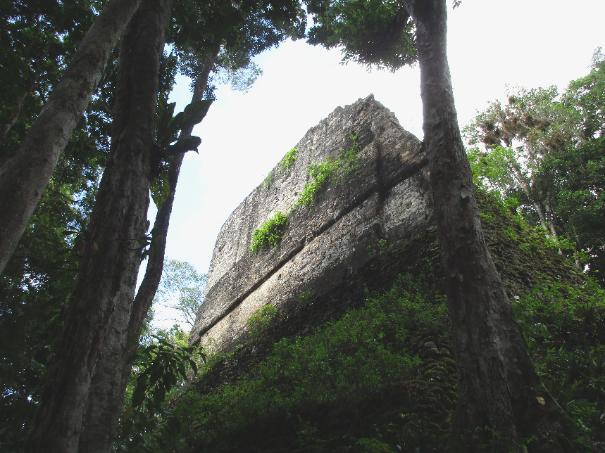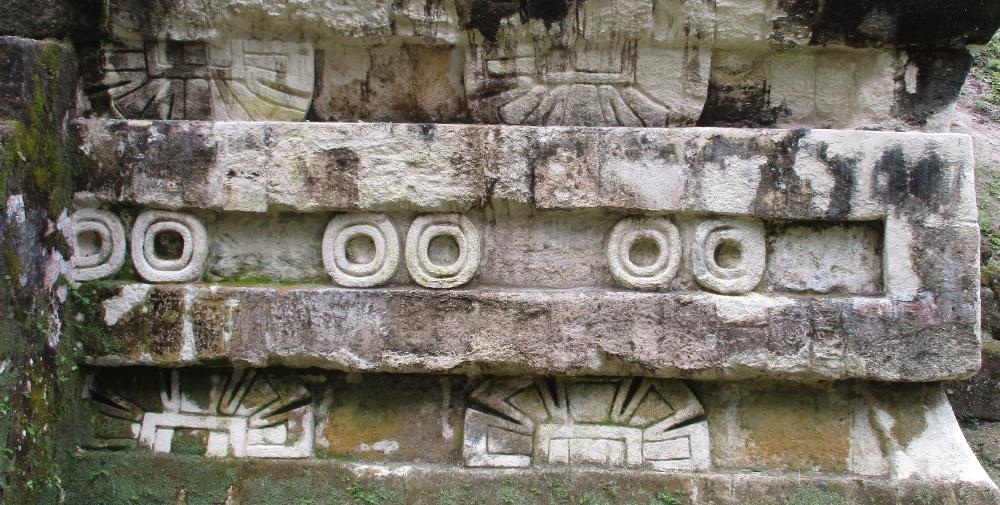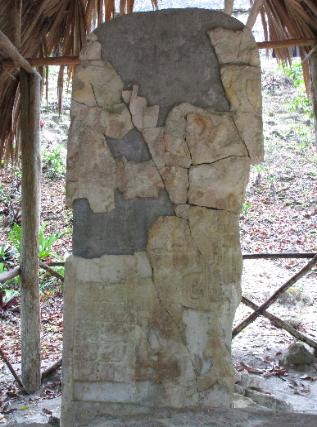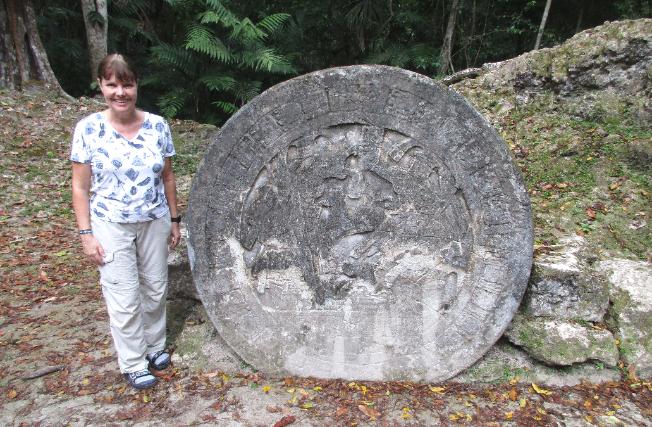
Where We Be
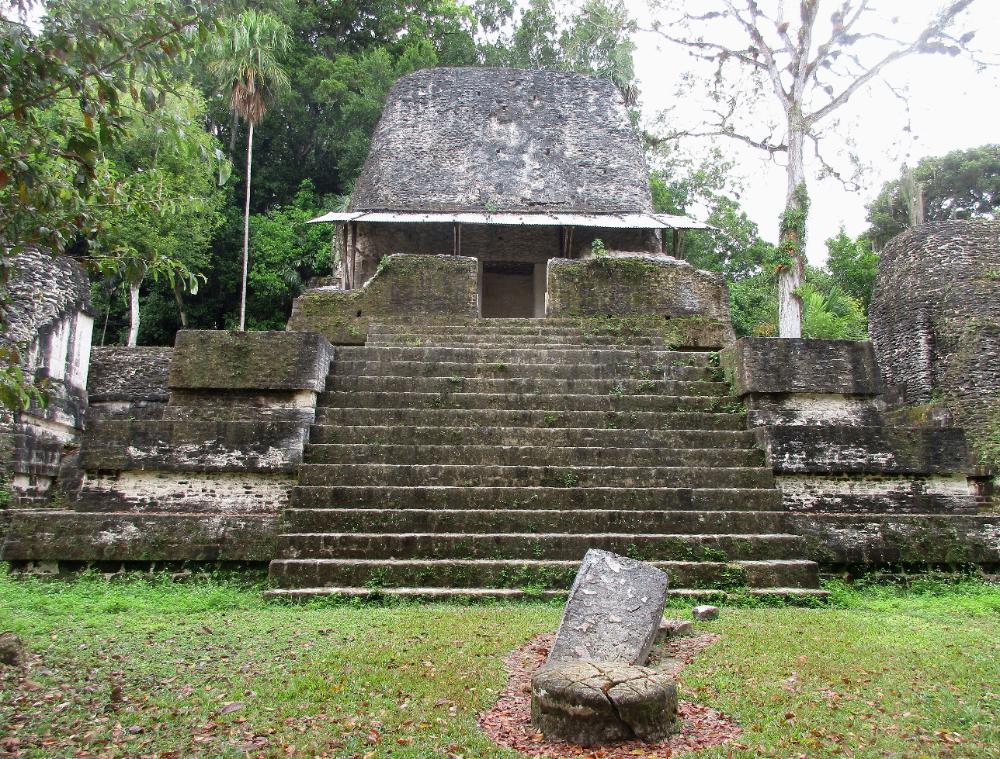
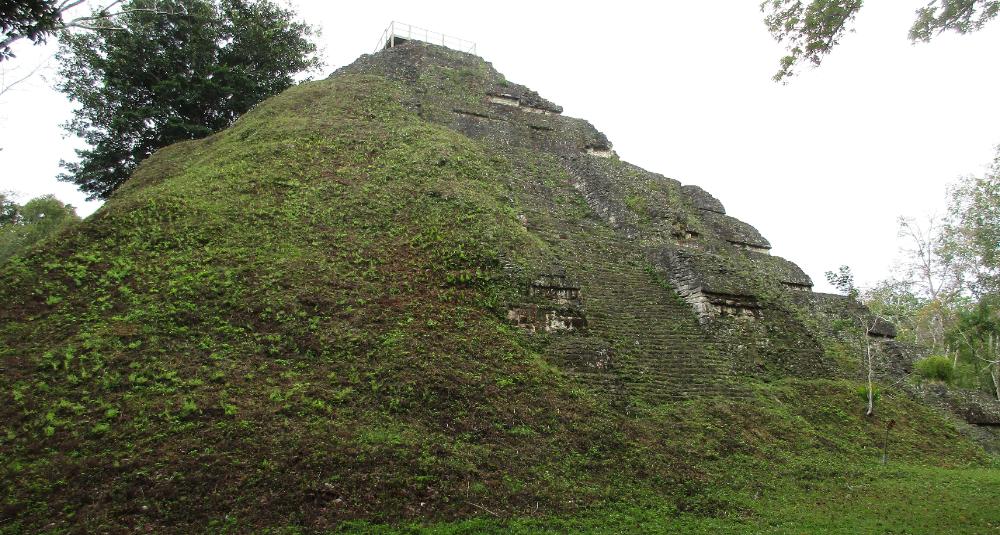
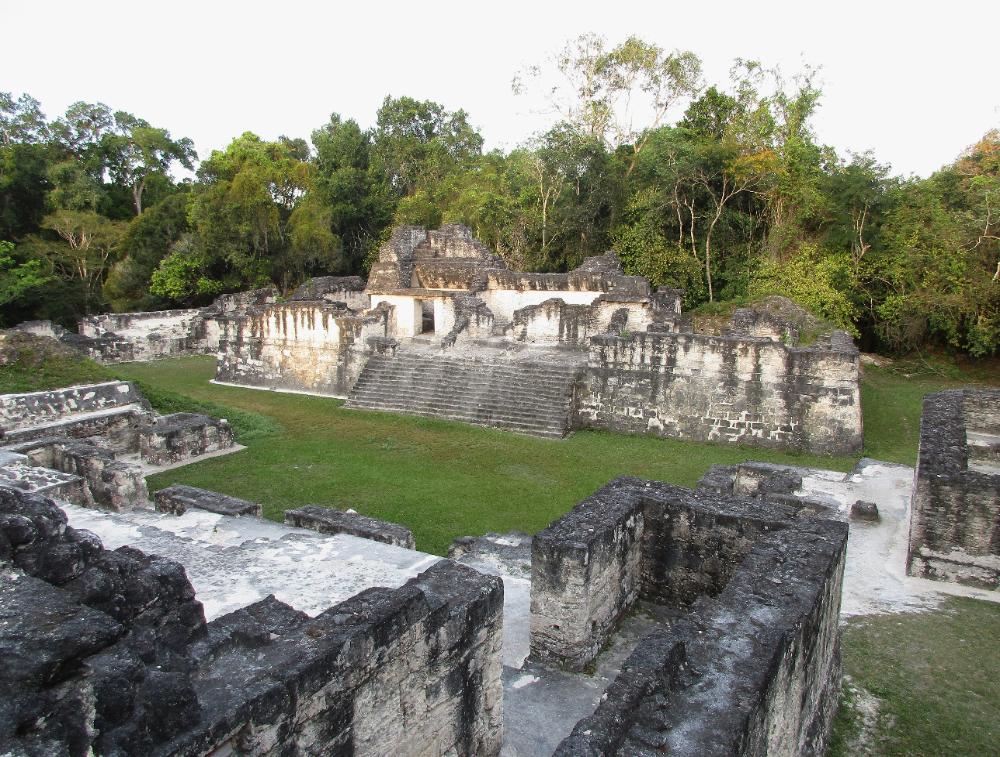
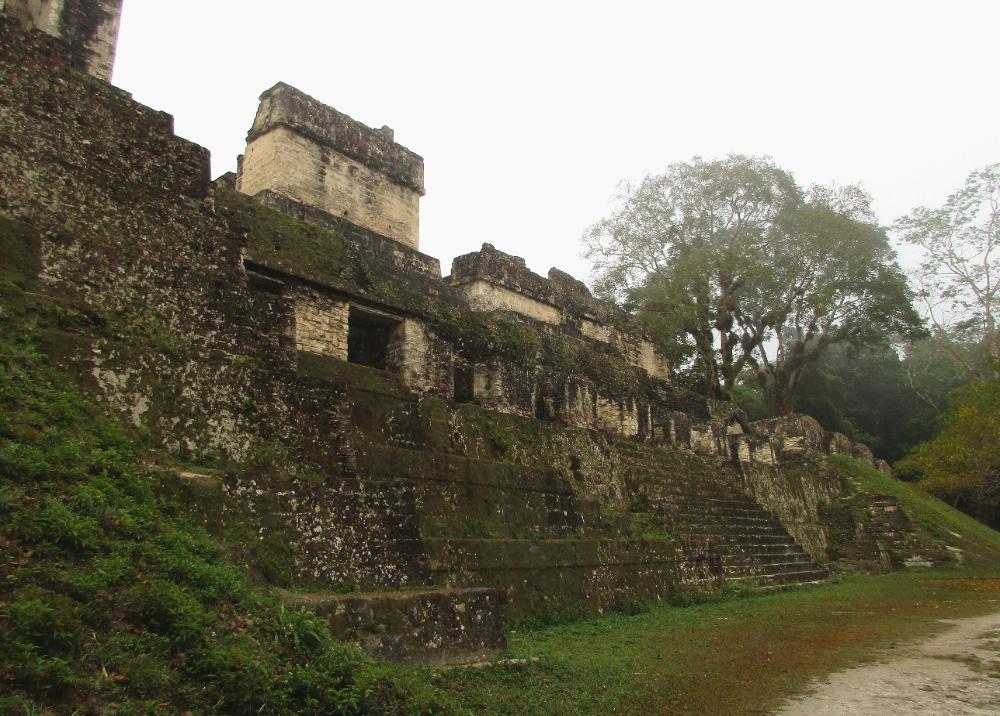
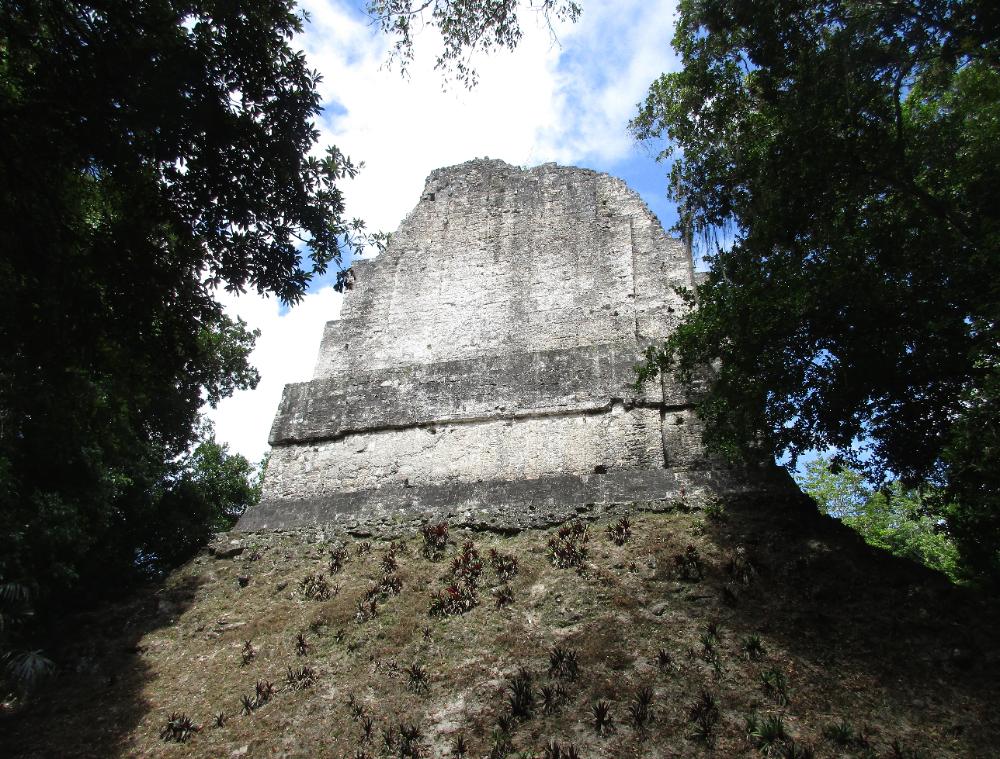
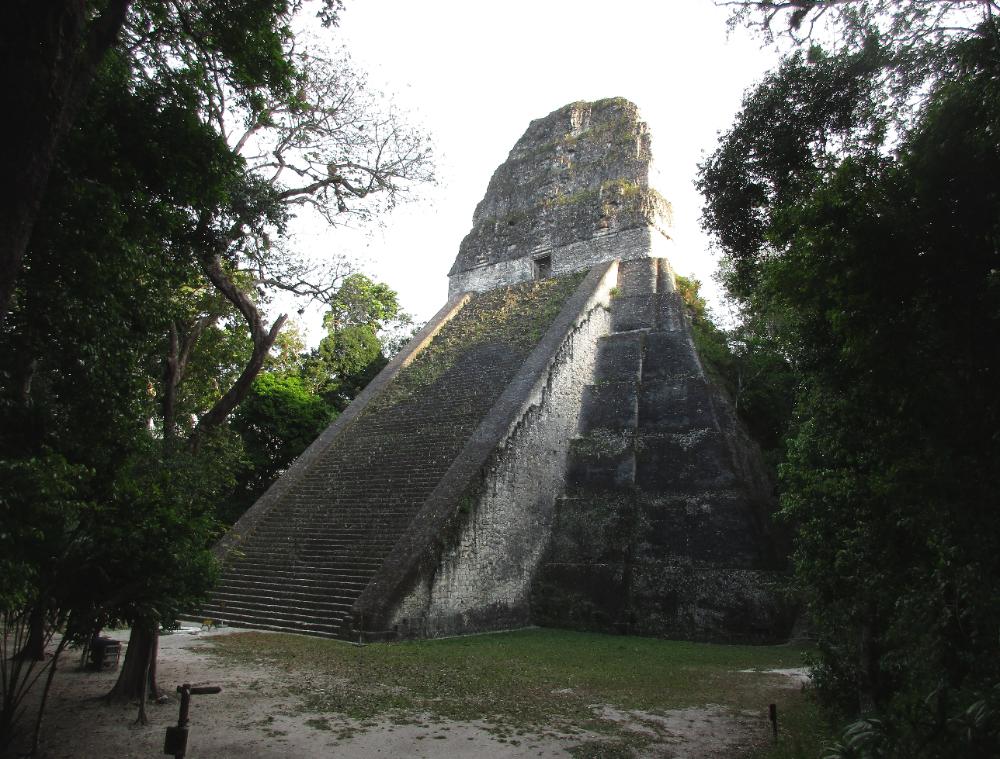

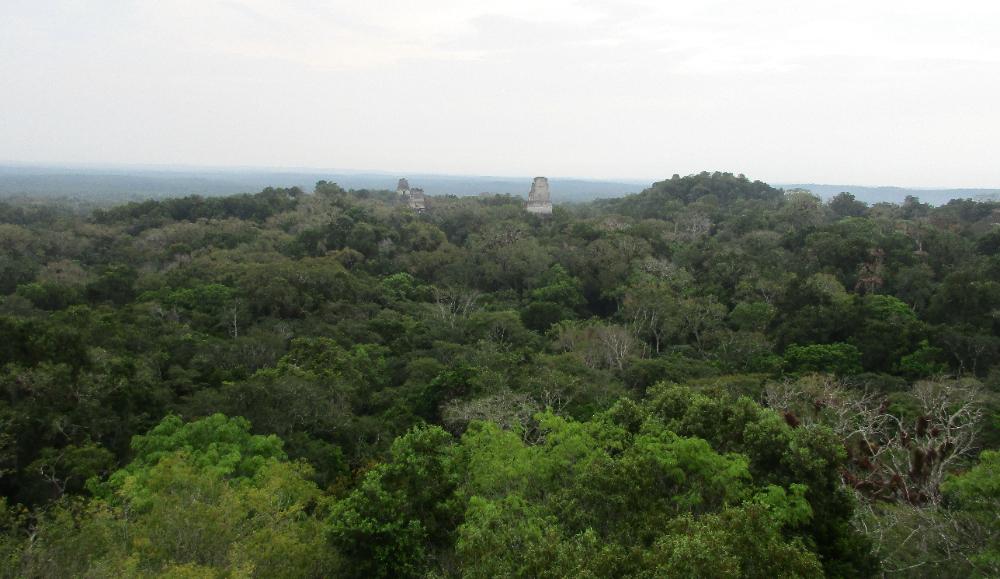
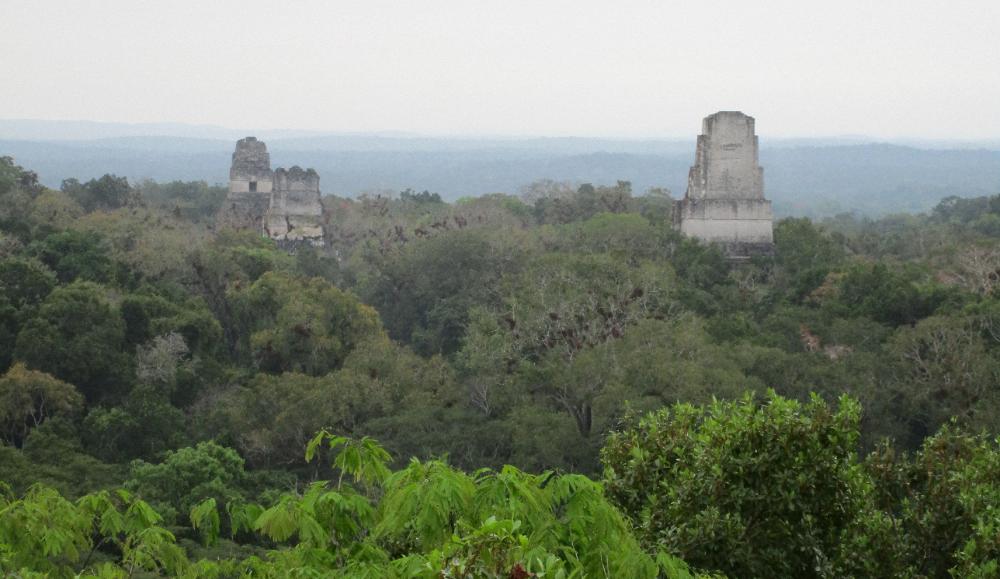
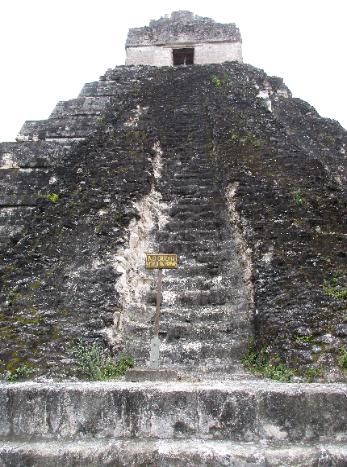
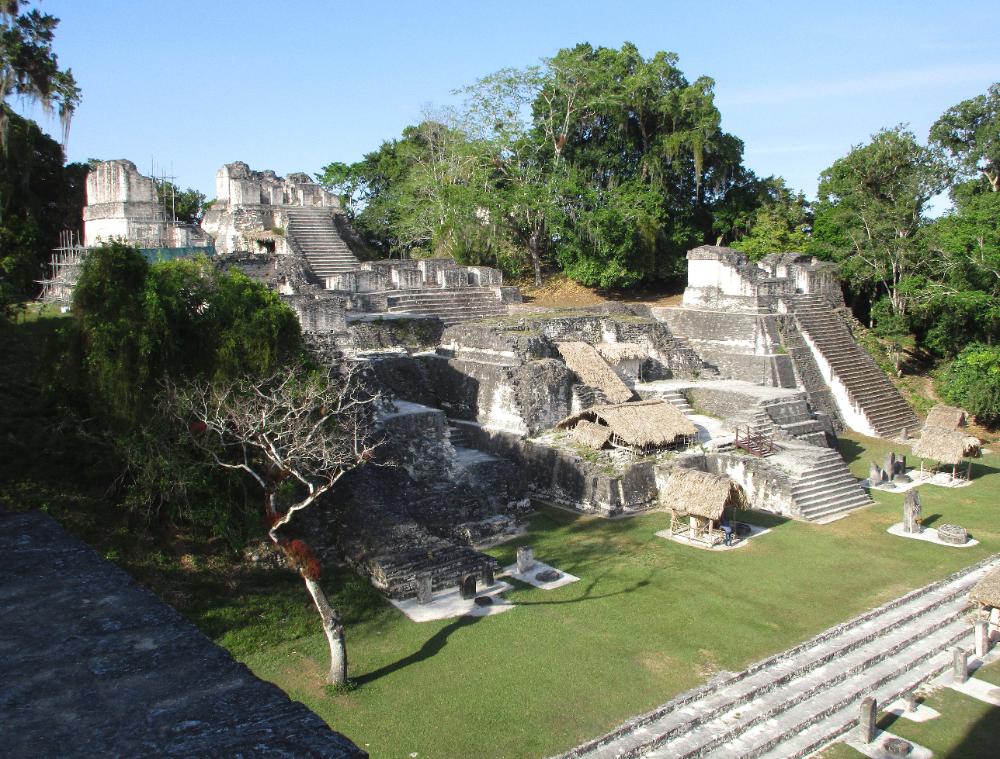
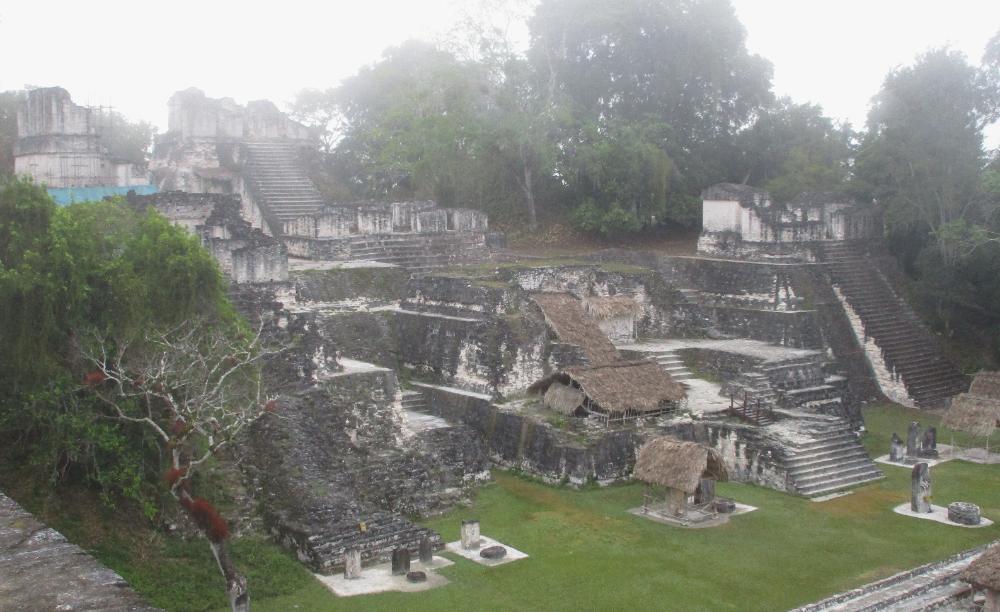
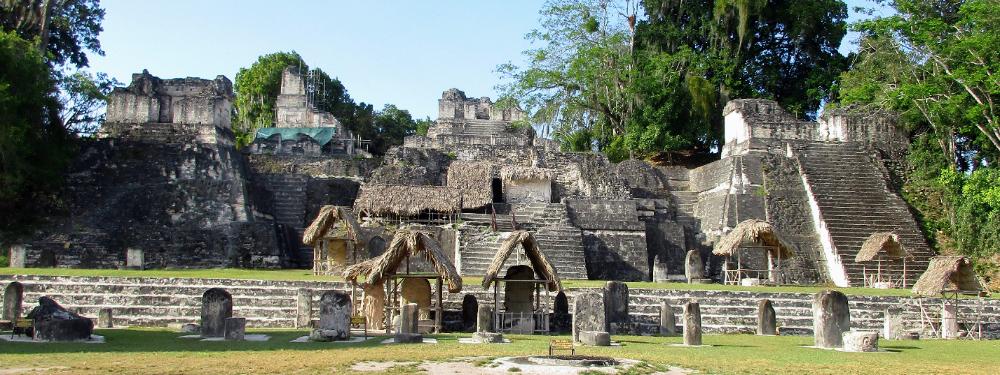
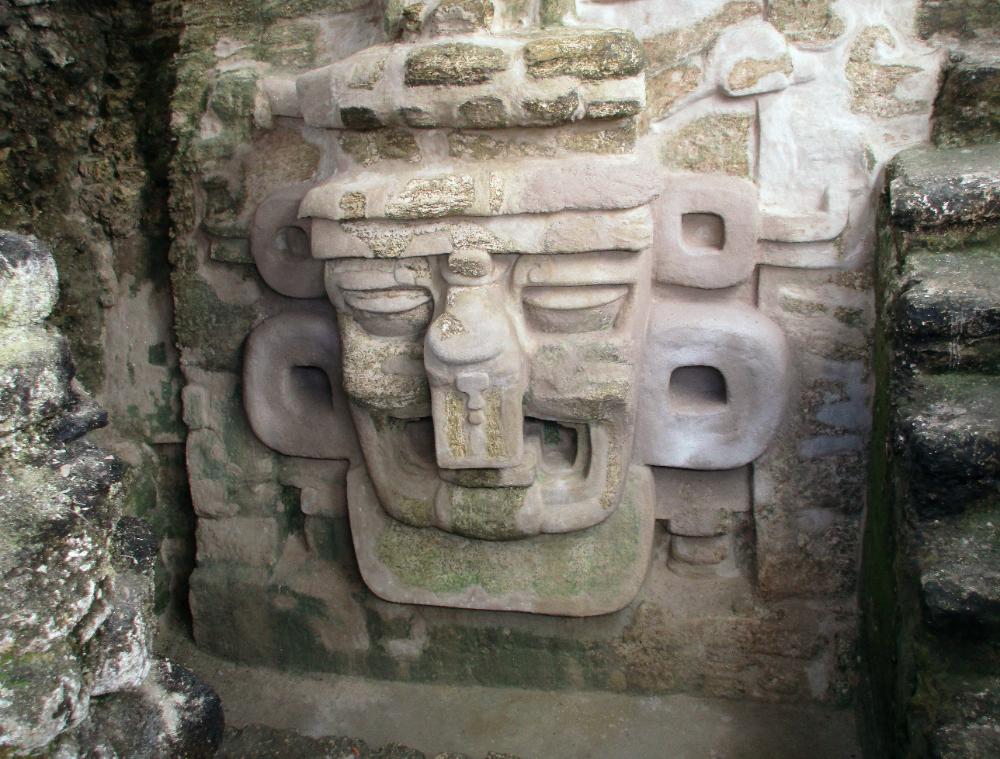
| Temple 1, the Temple of the Great Jaguar, is perhaps the most impressive pyramid in Tikal |
| Tikal, Guatemala |
We admit we love ancient ruins -- Machu Picchu
was our first big adventure, after all -- so the
extensive Mayan ruins at Tikal have been on
our bucket list for a long time. We thoroughly
savored our two days at Jungle Lodge Hotel,
located right next to the Tikal park entrance.
Tops on our list was the Great Plaza, anchored
by Temples I and 2 at either end. We think it's
the most dramatic spot in Tikal. Temple 1 stands
at 47 m (155 ft), and both it and Temple 2 were
built around the same time (~730 AD). They are
“his and hers” temples built for the first really
powerful ruler and his wife during Tikal’s early
classical period. The view from atop Temple 2
(shown left) was the highlight of our first day.
On our second day we revisited the Great Plaza
then went on to explore the rest of this ancient
city, logging some ten miles on foot altogether.
Other highlights included feeling very small at
the base of Temple 5 (second tallest in Tikal),
climbing to the top of Temple 4 (the tallest pre-
Columbian structure still standing in the New
World), and seeing the Lost World Pyramid
(oldest in Tikal, built way back around 300 BC).
was our first big adventure, after all -- so the
extensive Mayan ruins at Tikal have been on
our bucket list for a long time. We thoroughly
savored our two days at Jungle Lodge Hotel,
located right next to the Tikal park entrance.
Tops on our list was the Great Plaza, anchored
by Temples I and 2 at either end. We think it's
the most dramatic spot in Tikal. Temple 1 stands
at 47 m (155 ft), and both it and Temple 2 were
built around the same time (~730 AD). They are
“his and hers” temples built for the first really
powerful ruler and his wife during Tikal’s early
classical period. The view from atop Temple 2
(shown left) was the highlight of our first day.
On our second day we revisited the Great Plaza
then went on to explore the rest of this ancient
city, logging some ten miles on foot altogether.
Other highlights included feeling very small at
the base of Temple 5 (second tallest in Tikal),
climbing to the top of Temple 4 (the tallest pre-
Columbian structure still standing in the New
World), and seeing the Lost World Pyramid
(oldest in Tikal, built way back around 300 BC).
| Then there are sculptures on round stones, steles with inscriptions, and groups of ruins even more remote from the center. We thought two days was perfect, but you may want to spend longer or shorter depending on your own level of interest. |
| The most impressive sculpture we saw at Tikal was this giant one carved into a subterranean wall of the North Acropolis. |
| This is the North Acropolis as seen head-on from ground level. The thatched roofs protect carvings and inscriptions from the elements. Numerous stelae (upright stones with inscriptions) are placed out front. |
| Same view but looking much more austere on a misty afternoon. The Mayans buried their royalty here for some 1,300 years. |
| For centuries Tikal remained hidden in the jungle after being abruptly abandoned by the Mayans over 1,000 years ago. When you look at the Great Pyramid from this angle, overgrown with vegetation, it's easier to understand why these temples remained undiscovered for so long. |
| This is the view of the North Acropolis from Temple 2. Situated on the north side, it adds another splendid element to the Great Plaza. |
| Temple 2 is called the Temple of the Masks because of the two giant masks flanking the stairway. Squatter than Temple 1, Temple 2 sits at the plaza's west end. Scaffolding at back leads to a platform offering excellent views. |
| We were excited to have the Great Plaza all to ourselves. The trick is going early or late in the day. We headed out at 6 am when the park opened, explored for 4 hours, returned to the hotel, and enjoyed the pool at midday (when it's hottest and busiest at the park). Then we explored for another 2½ hours from 3:30 until 6 pm (closing). |
| Seeing Temple 1 the next day in sunshine was a real treat. It took us about 15 minutes to walk to the Great Plaza from the Jungle Lodge Hotel (adjacent to the entry gate). |
| Same view, different weather! Our first outing was on a misty afternoon but that didn't dampen our spirits as we explored Tikal for the first time. |
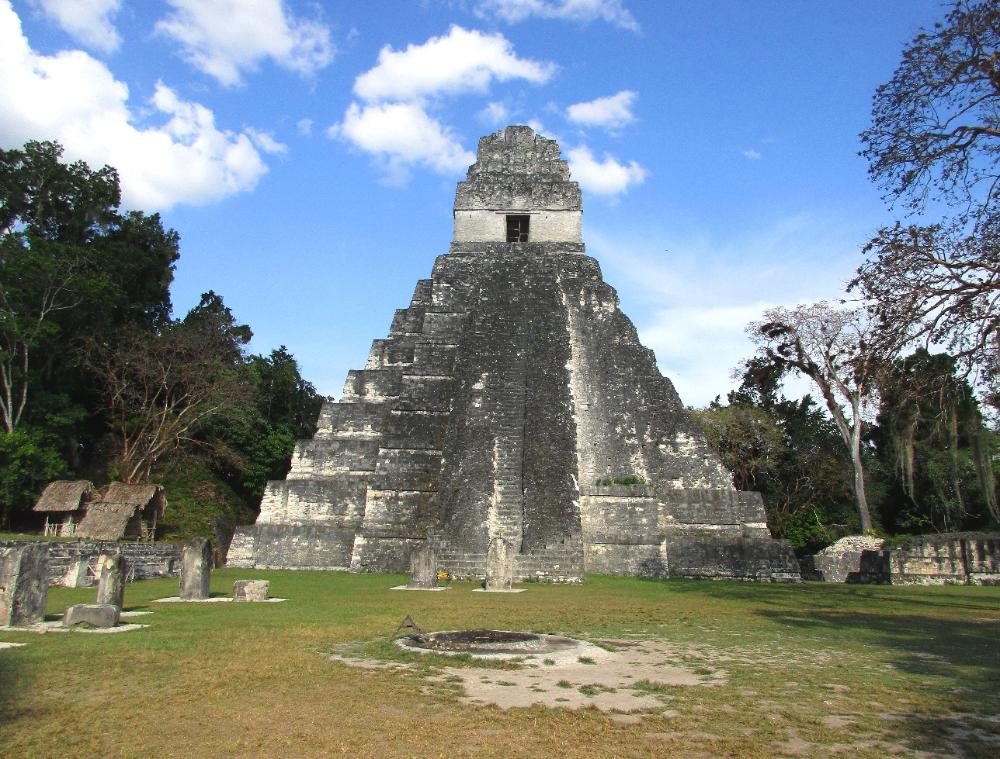
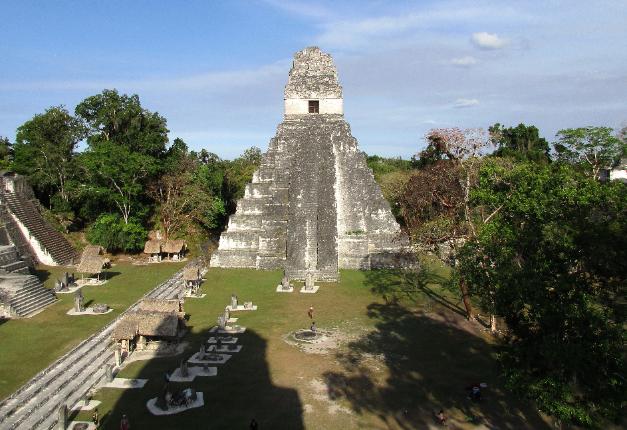
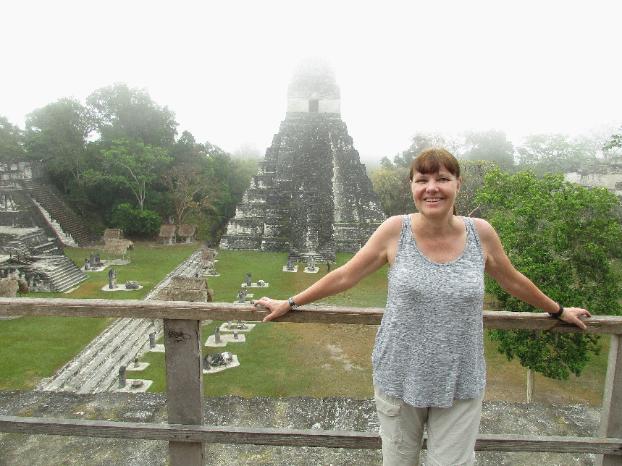
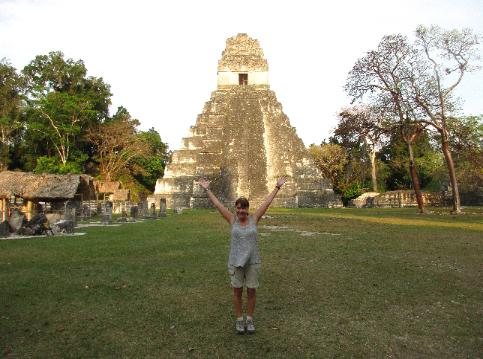
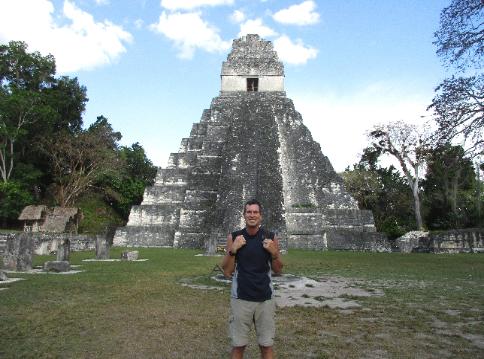
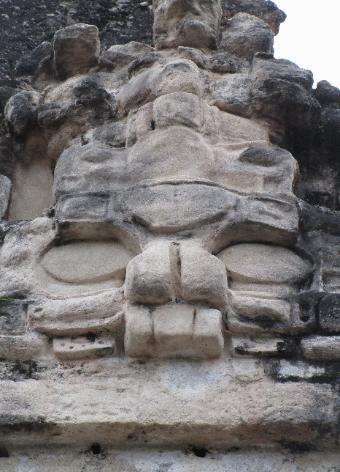
| That's pretty much it for all the big temples at Tikal, but there are numerous other smaller buildings here, many with fascinating (and mysterious) decorations on them. |
| Temple 38 reminds you just how many buildings are still completely or mostly covered in vegetation here. Tikal is one of the largest excavated sites in the Americas but there's still much to uncover. |
| And you won't want to miss the Bat Palace if for no other reason than the name! It's also known as the Palace of Windows, well, because there are windows. It's easy to identify which buildings are which here because there's good signage throughout in both English and Spanish. |
| If you happen to make it out to Temple 6, you may as well pause on the way to see the Palace of the Vertical Columns (Palacio de las Acanaladuras), known for its vertical panel grooves |
| But wait there's more! This is the Plaza of the Seven Temples. Here you're seeing the best preserved of the seven small temples, all of which stand in a row. Nearby are three Mayan ballgame courts. |
| The second largest temple in the Lost World is the Talud Tablero (Sloping Panel Temple). With so many temples to see, you can start to see why it makes sense to spend two days here. |
| It's another steep climb to the top of the Great Pyramid, but you're rewarded with great views -- including this dramatic view of the roof-comb of Temple 4 |
| The Lost World is the oldest part of Tikal, and this pyramid, known as the Great Pyramid, was built way back around 300 BC. It's 32 m (105 ft) tall -- note the viewing platform at the top. |
| Few visitors make it to Temple 6, the Temple of the Inscriptions, because it's so remote. It's known for its tall roof-comb covered with hieroglyphs (difficult to see from below). Lower parts of the pyramid are still buried. |
| When we visited Temple 5 in the early morning we had it all to ourselves. Note the roof-comb rising higher than the topmost stairs -- a typical feature of many pyramids at Tikal. |
| Temple 5 is impressive because you can stand right next to it (see Robin bottom left?) and really get a sense of its immensity |
| The climb to the top of Temple 4 via steep wooden stairways will literally take your breath away! Here Robin sits near the top steps enjoying a marvelous view. |
| And here's the view. If you're a Star Wars fan you may recognize this locale as the rebel base of Yavin 4 in "Star Wars IV: A New Hope." Tikal temples are also featured in "Rogue One." |
| This is the quintessential sunrise view many come to see, climbing to the top of Temple 4 while it's still dark on a guided tour. We chose to skip the sunrise and sunset tours and focus on the park during normal entry hours (6 am to 6 pm). This worked for us -- and we didn't mind missing the 3:30 am wakeup call! Mornings were overcast when we visited, but a good sunrise on a clear morning would certainly be a thing of beauty. |
| Temple 4 (built circa 741 AD) is not much to look at from below because of all the undergrowth, but it's the tallest temple at Tikal -- and the tallest pre-Columbian structure still standing in the Americas at 70 m (230 ft). |
| These are the best views we could get of Temple 3, aka the Temple of the Jaguar Priest. Built in 810 AD, this was the last pyramid raised at Tikal. By the end of the 9th century the city had fallen into ruin. |
| To the south is the Central Acropolis (why it's not called the South Acropolis is beyond me). Once upon a time it housed Tikal's royal families and retainers. |
| Temple 1 from directly below (no climbing allowed) |
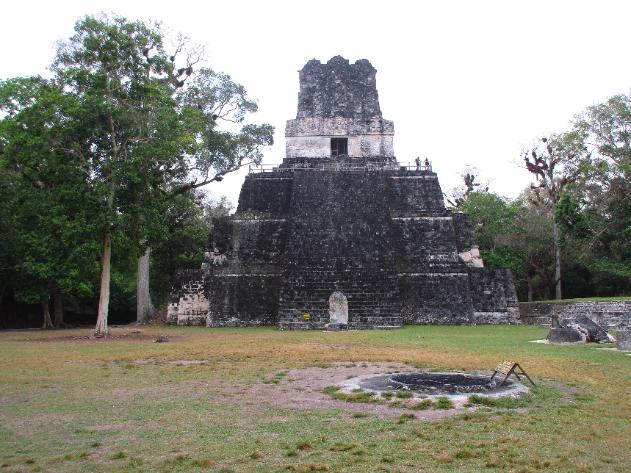
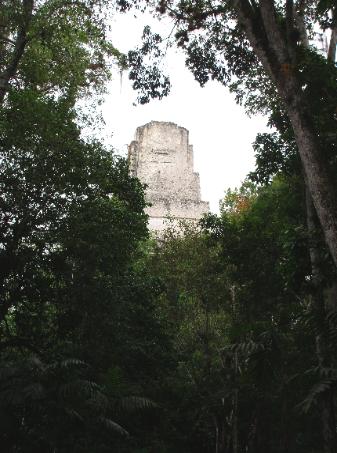
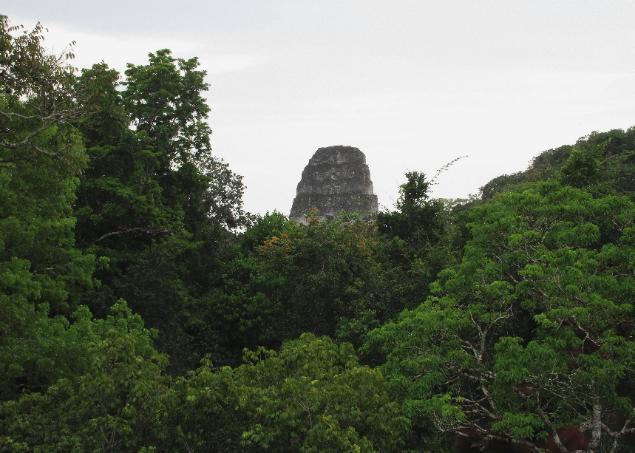
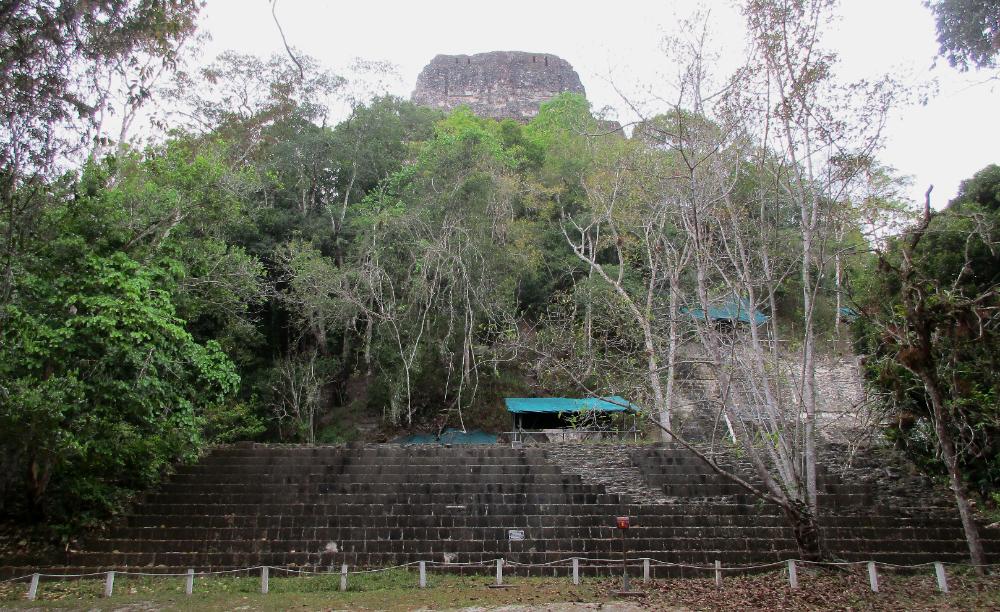
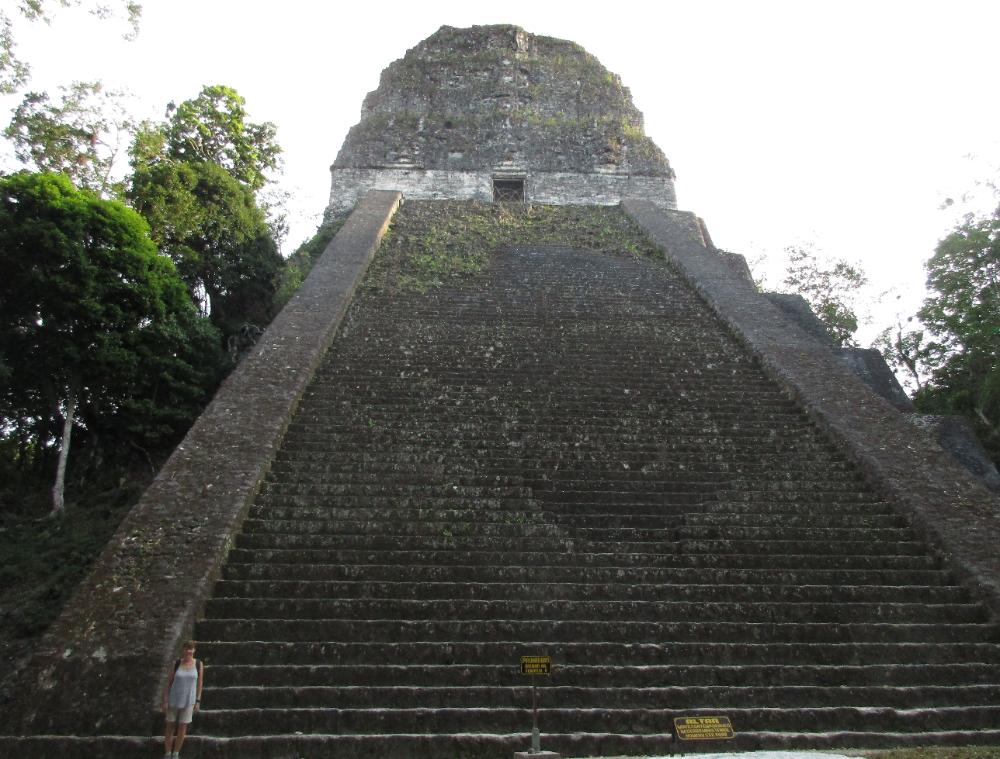
| Great Plaza (Temples 1 & 2) |
| Temples 3, 4, 5 & 6 |
| The Central Acropolis is a multi-story labyrinth of rooms and hallways, and you can wander all through it at your leisure |
| Mundo Perdido (Lost World) |
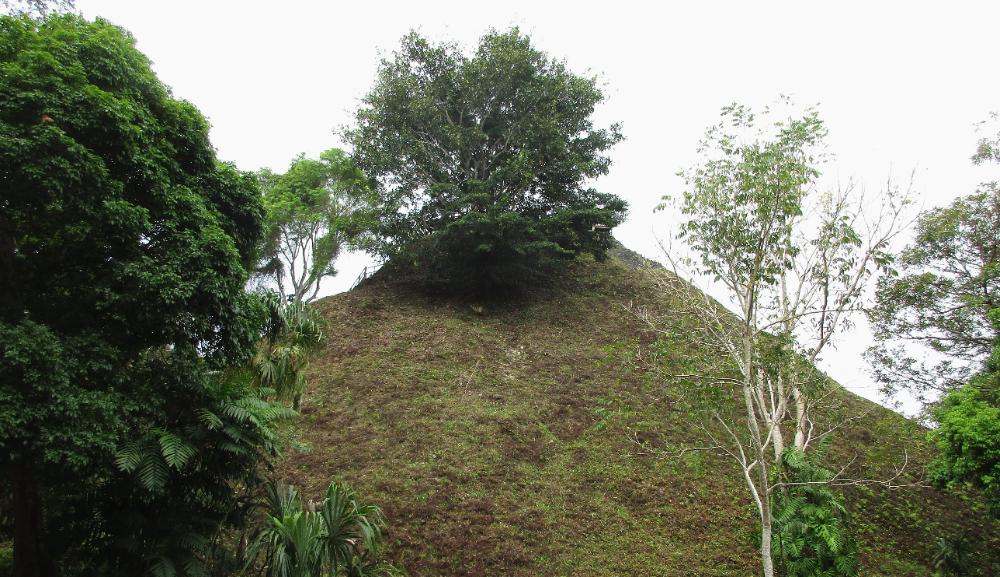
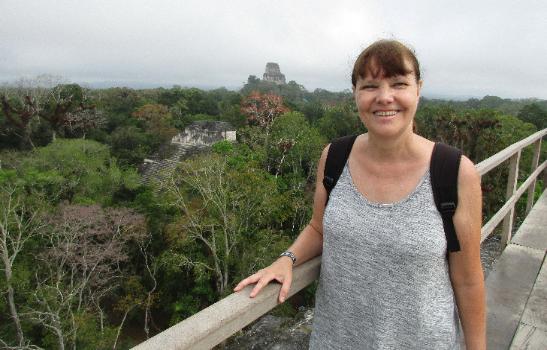
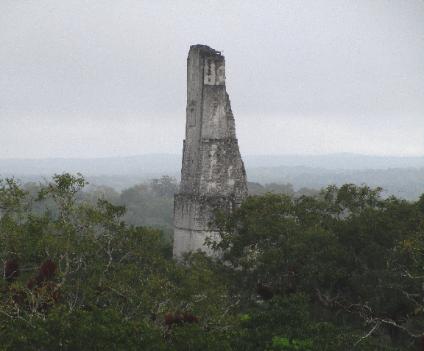
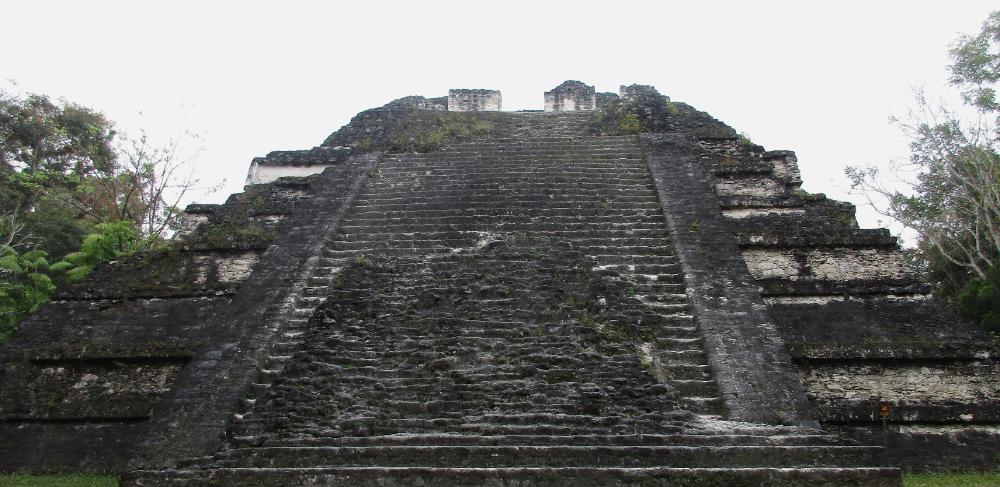
| Other Temples & Ruins |
